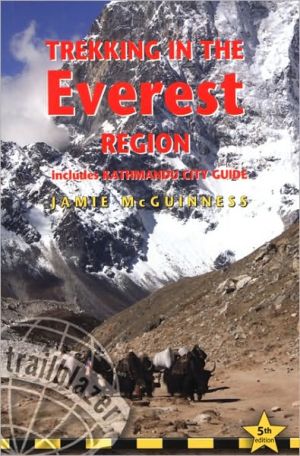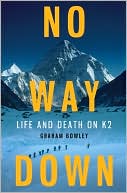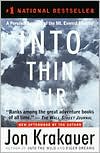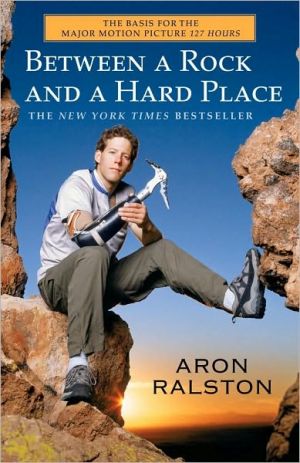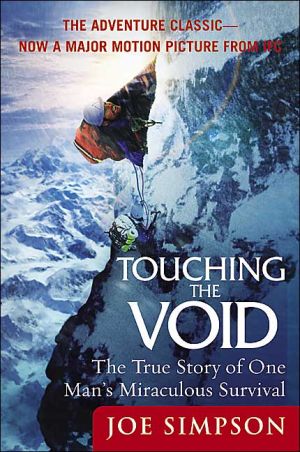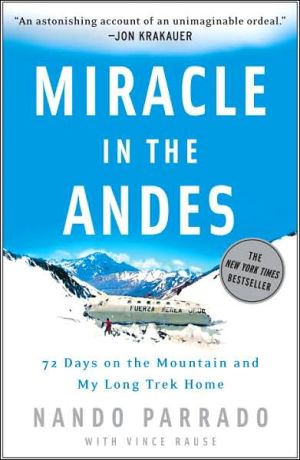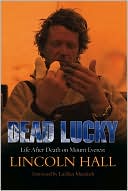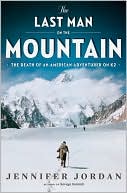Trekking in the Everest Region: Includes Kathmandu City Guide
Fully revised fifth edition of this practical guide with 60 detailed route maps covering not only the classic treks but also the wild routes:\ \ \ Everest expedition route \ Rolwaling \ Trekking from Lukla \ Salpa-Arun \ The Gokyo trek \ High passes \ Trekking peaks – including Mera and Island Peak\ \ Information for all budgets and trekking styles\ Ranging from lush terraced fields to the highest...
Search in google:
Trekking guide to the Everest region of Nepal's Himalayas. Ranging from lush terraced fields to the highest mountain on earth, the scenery is breath-taking. There are trekking possibilities to suit all budgets – from independent trekkers on a shoestring staying in simple lodges with Sherpa families to travelers on all-inclusive guided treks with every luxury provided.
Introduction\ The Solu-Khumbu region of Nepal has been a magnet for mountaineers, adventurers and travellers ever since its opening to foreigners in the 1950s, and with good reason. They may primarily be drawn by a desire to see the world’s highest mountain but Everest is only one of a myriad of beautiful peaks in the area. Indeed, even if Everest wasn’t here, the Khumbu (Everest region) should still be an extremely popular area, for it is a superb region for trekking, climbing and exploring.\ Passing through populated areas, a trek in Nepal is very different from a wilderness hike in the USA or New Zealand, or a randonnaire route in the European Alps. The hills in Nepal are the life and soul of diverse ethnic groups, the most famous of which are the hospitable Sherpa people. What further sets trekking in Nepal apart is the low cost and the ease with which a trek can be arranged. There can be few countries where you can set off for a month-long walk carrying no food or shelter yet be 100% sure that every day you will be able to find these essentials, and on a budget of much less than twenty dollars a day. Alternatively, if you want an organized trek with an entourage of guides, cooks and porters to transport you back to the luxurious time of pukka sahibs and memsahibs, this can be quickly arranged with competent staff for a very reasonable cost.\ Three areas in Nepal have become popular with trekkers for their scenic attractions and their established network of local lodges for accommodation and food. As well as the Everest region, there’s the Annapurna region, north of Pokhara, which may have a greater range of terrain and cultures but receives nearly twice as many trekkers as the Everest region. The third area is Langtang, north of Kathmandu, which is quieter and less developed. What sets the Everest region apart from these two other areas is the fact that once above Namche and Lukla you are right among the mountains, continuously above 3000m/10,000ft with many chances to ascend above 5000m/16,400ft. The greater Khumbu (Everest) region also has immense scope for wild exploration.\ One of the world’s classic long trekking routes, the first part of the traditional 'expedition’ route from Jiri to Everest crosses ridge after ridge of painstakingly-terraced hills populated by subsistence farmers. Semi-mediaeval villages cling to the hillsides with mysterious gompas (Buddhist monasteries) above them. Rural life, little-changed for centuries, surrounds the trekker, thought-provoking and very different from the Western way of life. You soon settle into the trekking lifestyle leaving the instant world of mobile phones far behind and rediscovering simple pleasures like the enduring glow of a sunset, the magic of flickering flames and the bliss of sleep to soothe naturally exercised muscles.\ Namche, the capital of the Khumbu and a focal point for trekkers, is juxtaposed between the old and the new with traders well versed not only in the various types of Tibetan tsampa but also in the different brands of titanium ice screw. From the alpine valleys above Namche, the scenery is awesome: Ama Dablam, Kangtaiga, Cholatse and numerous other peaks, while the 8000-metre giants, Makalu, Cho Oyu, Lhotse and Everest command respect for their sheer height.\ The highest mountain on earth has several different names. To the Western world it became Mt Everest in 1865 (and was pronounced 'Eve-rest’) but to the Tibetans and the Khumbu Sherpas it has always been Chomolungma. The Chinese have wisely used the local name (transliterated as Qomolangma). Much more recently the government of Nepal has given it the name Sagarmatha. In this guide, it’s referred to as Everest only because this is the name most readily recognized by readers. I personally prefer the original name, Chomolungma.\
INTRODUCTION (1) PART 1: PLANNING YOUR TREK – What is trekking? Trekking in the Khumbu, With a group or on your own? (Independent teahouse trekking, Commercial guided treks, Nepali trekking agencies, Trekking agencies outside Nepal (UK and Ireland, Continental Europe, USA, Canada, Australia, New Zealand) How long to go for, Route options (Walking in or out, Flying in, Route options above Namche, Leaving the region, Other options, Other activities), Budgeting, When to go, What to take (Factors affecting equipment selection, Equipment list, Renting or buying equipment in Nepal, Adventure trekking equipment, Recommended reading, Map recommendations), Health precautions and inoculations (Specific age groups, Medical conditions, Inoculations, Medical insurance (2) PART 2: NEPAL Facts about the country (Geographical background, Climate, Historical outline, Economy, Development), Practical information for the visitor (Visa and trekking regulations, Getting to Nepal, Local transport, Language, Electricity, Time, Money, Post and telecommunications, TV, radio, newspapers and magazines, Holidays and festivals, Food, Drink, Things to buy, Security (3) PART 3: KATHMANDU The city (History, Arrival and departure, Orientation, Where to stay, Where to eat, Nightlife, Services, Transport, What to see, Sightseeing tours), Trek preparation in Kathmandu (Trekking equipment, Organizing a guided trek in Kathmandu, Hiring guides and porters, Money for the trek, Luggage storage, Getting to the Khumbu (4) PART 4: THE EVEREST REGION Mountaineering history (Everest, Cho Oyu, Makalu, Lhotse), The people, The Sherpas (Origins, Agriculture, Diet, The Sherpa house, The Sherpa view of life, Mountaineers, sirdars and porters, Coping with development), The Rai (Origins, Religion, Agriculture and work, Values), National parks (Sagarmatha National Park, Makalu-Barun National Park and Conservation Area (MBNPCA), Facilities for the trekker (Accommodation and food, Shops, banks and post offices), Minimum impact trekking (Environmental concerns, Cultural considerations, Economic impact) (5) PART 5: ROUTE GUIDE AND MAPS Using this guide (Route descriptions, Village and feature names, Trail maps, Following trails, Walking times, Altitudes, Facilities, Map key), Jiri to Namche (Introduction, Kathmandu to Jiri, Jiri, Jiri to Shivalaya, Shivalaya to Bhandar, Bhandar to Junbesi, Junbesi, Junbesi to Bupsa, Bupsa to Surke/Lukla/Namche), Trekking from Lukla (Introduction, Lukla, Lukla to Namche, Namche, Around Namche, Namche to Thame, To Lobuche and Kala Pattar, Namche to Tengboche, Tengboche, Tengboche to Pheriche/Dingboche, To and around Chukhung, Pheriche/Dingboche to Lobuche, Lobuche to Gorak Shep and Kala Pattar, Heading down), To Gokyo (Introduction, Namche to Gokyo, Gokyo and around, To and from Phortse, Chugyima La, Chugyima La to Gokyo), Khumbu side trips and pass-hopping (Khumbu to Makalu, Kongma La, Peak, Amphu Labtsa, Mingbo Valley, The Bhote Valley, Kyajo, Phaplu start, To Chialsa) Salpa-Arun to the Khumbu (Introduction, Getting to eastern Nepal, Basantpur to Tumlingtar, Hille Leguwa to Tumlingtar, Tumlingtar, Tumlingtar to Balawa Besi, Balawa Besi to Jau Bari, Jau Bari to Sanam, Sanam to Najing Dingma, Gai Kharka to Puiyan) From Bhojpur (Bhojpur, Bhojpur to Dingla, Dingla), Rolwaling (Introduction, The Rolwaling Valley, Simigoan to Dolakha/Charikot, Gongar to Barabise), Trekking peaks (Preparation, Imjatse/Island Peak, Mera, Lobuche, Parcharmo, Pokalde/Dolma Ri, Other trekking peaks in the region) (6) APPENDICES A.Itineraries and acclimatization planner, B. Health, C. Flora and fauna, D. Nepali words and phrases, E. Glossary, F. Bibliography, (7) INDEX
